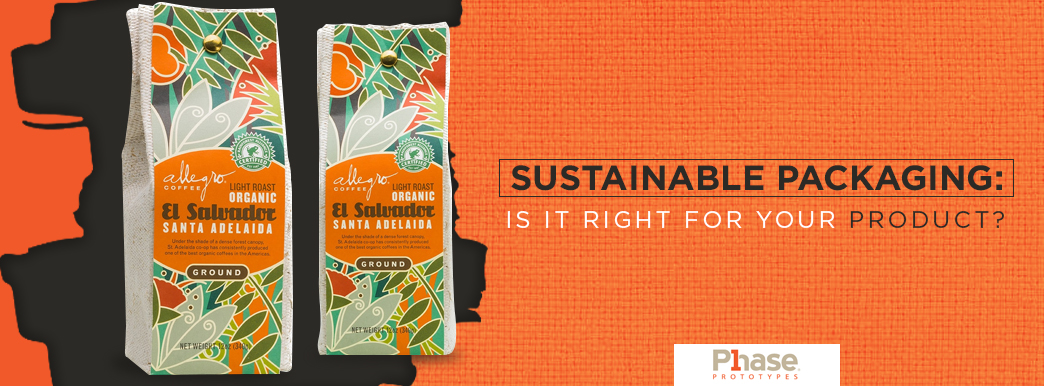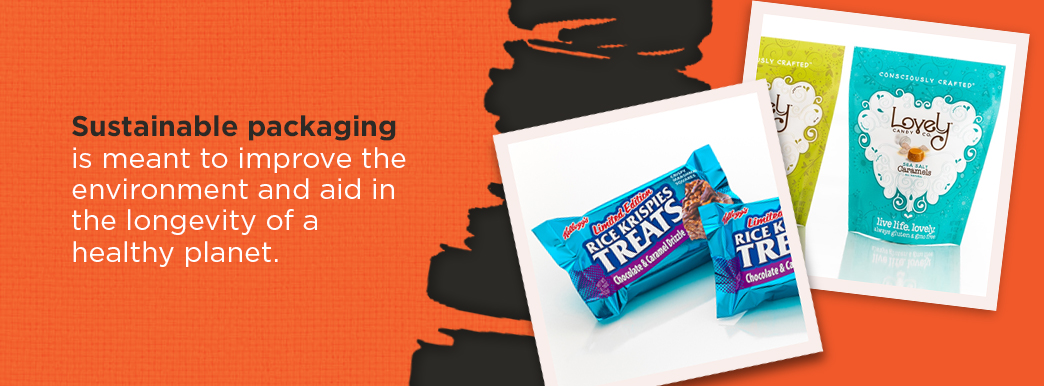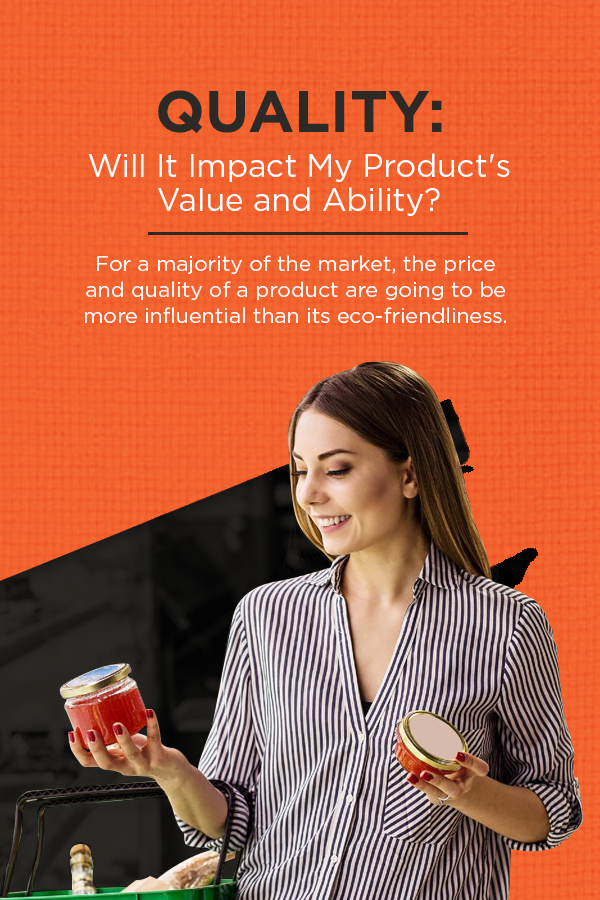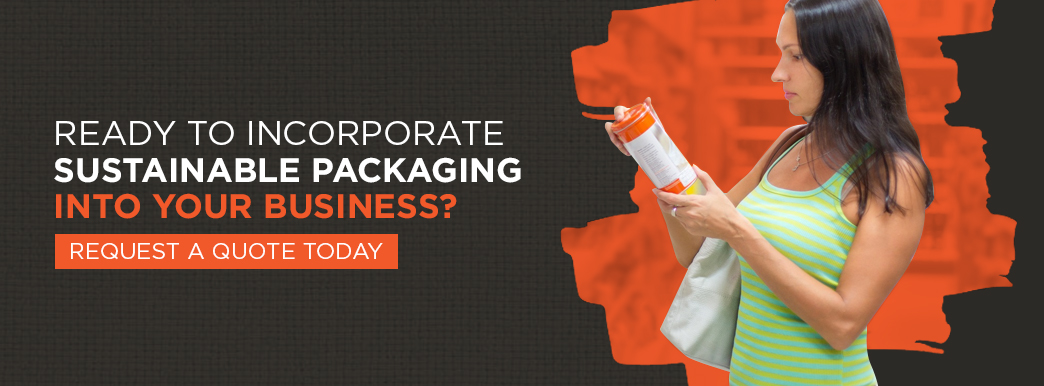Sustainable Packaging: Is It Right for Your Product?
By: phase1
Sustainable packaging is a term that you’ve probably heard, but you might not know exactly what it entails and how it can benefit your business.
As some cities have already mandated that businesses within city limits use sustainable packaging, and as more consumers care about sustainability, you will want to understand sustainable packaging to make an informed buyer’s choice.
What Is Sustainable Packaging?
Sustainable packaging relates to the physical packing materials as well as the entire supply chain that goes into creating the packaging and eventually disposing of it.
Though sustainable packaging is not a difficult concept to understand, it does have a variety of features that have to be understood holistically to define the term properly. Sustainable packing will be:
- Safe, beneficial and healthy for the people who come in contact with it throughout its life
- Able to meet the market’s criteria for cost and performance
- Using renewable energy to source, manufacture, transport and recycle
- Optimized to use recycled or renewable source materials
- Created with best practices and clean production technologies
- Manufactured from materials that stay healthy through the life cycle
- Recovered effectively and then used in industrial or biological closed-loop cycles
If your packaging meets all of those requirements, it can be considered totally sustainable. Another way to think about sustainability is to ensure that your packaging has the four following qualities:
- Effective: Your packaging is a proponent of responsible and informed consumption for consumers. It also protects the contents inside of it competently.
- Efficient: Your machinery and packaging line uses materials as efficiently as possible.
- Cyclic: Your package’s material is cycled through technical or natural systems to reduce degradation or the number of upgrading additives used.
- Safe: Every part of your packaging does no harm to the health of human beings or the planet.
Examples of Sustainable Packaging
Now you know the definition of sustainable packaging, but you may be wondering what this kind of packaging looks like in real life. With the focus on sustainability growing, many companies have worked on developing their lines of packaging to be more eco-friendly and biodegradable.
1. Compostable Foodservice Packaging
This form of packaging is manufactured from renewable resources, helping to reduce wastefulness. Additionally, biodegradable packaging allows customers to throw away their food scraps and packaging into a compost bin, which keeps you from sending extra waste to landfills. You’ve probably already seen compost bins popping up in a variety of restaurants and coffee shops around the United States.
2. Reusable Containers
To prevent containers from being quickly discarded into the trash, companies have begun incorporating containers that can be safely reused and eventually recycled. For example, in 2010, KFC began to roll out their sides in dishwasher and microwave safe reusable containers. Since then, the containers have made such an impression that now the company will be eliminating all non-reusable plastic packaging by 2025. Like KFC, you can provide extra value to consumers with reusable packaging while also reducing the waste you produce.
3. Bulk Bins
Some supermarkets have reduced their waste in recent years by carrying their products in large bulk bins. These bins reduce packing waste as they encourage customers to take what they want without having to purchase the products in multiple packages.
Why Is Sustainable Packaging Important?

Sustainable packaging is meant to improve the environment and aid in the longevity of a healthy planet. Unsustainable packaging results in a larger carbon footprint and creates waste that is difficult to deal with, making the need for sustainable packaging crucial to human health.
Your company can help keep the Earth healthy, and sustainable packaging is also an excellent way to market your company to an ever-growing demographic of environmentally-minded consumers. These consumers do their research, and they only associate with brands they believe produce eco-friendly products. If you ignore this demographic and continue to use unsustainable packaging, you may lose a large chunk of the market to your competitors.
1. Lack of Recycling Infrastructure
With it becoming increasingly hard to recycle plastic pollution due to China imposing stricter standards on foreign recycling materials, U.S. cities no longer have a place to send their plastics. In the wake of the stricter Chinese standards, the market for recyclables has been reduced significantly, causing cities to pay to get rid of their recyclables instead of earning revenue off of them. Even worse, cities have had to either cut or reduce their recycling programs based on the difficulty of getting rid of the recyclables.
The lack of effective recycling infrastructure in the United States makes it even more critical to develop sustainable packaging that can be reused or composted to avoid the recycling bin.
2. Packaging Chemicals
Unsustainable packaging materials can also be hazardous to people’s health. Chemicals found in standard packaging materials like polyvinyl chloride (PVC) and Bisphenol-A (BPA) have been associated with cancer and fertility issues. Using polyolefin packaging films for your packaging needs is an excellent alternative to common packaging. They are 100% recyclable, free from dangerous chemicals and have been approved by the FDA as food safe. On top of their safety, they are durable and attractive.
Advantages of Eco-Friendly Products and Sustainable Packaging
This might all make sense to you, and you can see the harm of unsustainable packing, but you may still be unsure how to sell sustainability to the rest of your company. After all, your bottom line is important too.
Luckily, your change to sustainable packaging can have tremendous benefits both ethically and financially.
1. Better for the Earth
Sustainable packaging can reduce the amount of water usage, electricity, solid waste and emissions that go into packaging a product or making the packaging itself. Reducing the amount of material and energy it takes to create your product and packaging can considerably reduce your carbon footprint.
One tangible way that sustainable packaging positively impacts your carbon footprint is through weight. Lighter, sustainable packaging will reduce the energy it takes to produce goods and to ship said goods to the end-user or retailer.
Additionally, sustainable packaging lowers the amount of waste that enters a landfill each year. Containers and packaging make up 23% of the material that ends up in landfills every year. This statistic doesn’t even include the number of packages that are thrown on the side of the road or into our water streams. Counteract this by making the Earth a better place with sustainable packaging.
2. Improved Customer Perception
By growing a reputation as a company that cares about the environment and uses eco-friendly products, you will gain a bump in sales to a section of the market that does not want to harm the planet. If you want to break into new markets, sustainable packaging is an easy way to market yourself an ever-expanding eco-conscious consumer base.
Along with helping you expand into a new market, sustainable packaging can improve your sales numbers. When people consider purchasing a product, several factors go into their decision before they buy. Price and need are the main considerations, but a product or brand’s environmental reputation plays a role in many customers minds. Give them one more reason to purchase your product with sustainable packaging.
With packaging that shows that your brand cares about the environment and is attempting to reduce your carbon footprint, you can raise your sales dramatically. The claim that you will receive growth in your sales is not just conjecture. A 2015 Neilsen study found that a majority of millennials would pay more for sustainable products.
3. Efficient Storage
Sustainable packaging is usually much more efficient than traditional packaging, allowing it to reduce the amount of space that it takes up at your or your users’ facilities. With more efficient storage, you can ship more products at one time on your transport vehicles and simultaneously reduce your freight costs. With reduced shipping costs and fewer transports needed to ship more product, you will end up saving money due to the switch.
Along with reducing your transport costs by making the storage more efficient, sustainable packaging takes up less space on the shelf of retail stores, letting you sell more diverse products or come up with creative displays to use the empty space.
How Will I Know If It’s Right for My Product?
Why should you use sustainable packaging? When you are trying to decide whether to switch packaging, you should consider three primary factors — market, quality and budget.
1. Market: Will They Care?
Before you switch to sustainable packaging, you’ll want to examine the market for your products and determine if consumers are going to care. Consider how much your current customer base values sustainable packaging and if you could expand into a market that is more eco-friendly with sustainable packaging.
Additionally, you’ll need to determine if consumers are likely to notice the change on their own or if they’ll need to market to them more aggressively. You may already do business with a market that is extremely environmentally passionate, but it’s also likely that you sell to people who want to do better for the environment but don’t go out of their way to find sustainably packaged products.
Even if your consumers aren’t likely to go out of their way to find an eco-friendly product, you can market your changes directly on the packaging, making it easy for the average consumer to spot. If the information is right in front of them, they will be more likely to purchase a product with sustainable packaging over a similar product that does not have sustainable packaging.
2. Quality: Will It Impact My Product’s Value and Ability?

For a majority of the market, the price and quality of a product are going to be more influential than its eco-friendliness. Due to this factor, you will want to make sure that any sustainable option you decide to go with maintains the quality that your customers expect.
If you’re set on making the switch to sustainable packaging, try to find packaging that uses less material while also maintaining the high quality your customers have come to expect. With sustainable advancement being made every day to caps, containers and other parts of the packaging, you’re sure to find a solution that works for you.
3. Budget: Is There a Price Difference? How Will It Affect Profit Margins?
As we discussed before, sustainable packaging can help your bottom line significantly. However, you should always check to see that a company can create sustainable packaging that will cut your costs. Ask about the price differences in their packaging and also consider how your profit margins may be affected by this change packaging.
One significant way that you can save money with sustainable packaging is the reduction in shipping costs. Due to the reduction of raw materials and packing materials needed in the packaging of products, you will likely be able to ship more products in one batch, which will help save you money.
However, you should make sure that your new packaging materials can hold up or you will pay more in the end. For instance, you will not want to have packaging that is so lightweight that it doesn’t protect your product enough, as you will then have to spend money on refunds and returns.
If you do a lot of your business online, it’s inevitable that customers will want to return products. With traditional packaging, you would need to send them extra packaging with a return label to make it possible for them to send it back. To reduce these costs, you can use sustainable packaging that can both deliver the product and then be reused by the customer to return the product. Little changes like this will add up both for your bottom line and the good of the environment.
But Will Sustainable Packaging Actually Help?

Some people claim sustainable packaging can actually do more harm than good. Take the food industry, where the switch to entirely sustainable, non-plastic packaging could lead to an increase in food waste. Processing wasted food leaves a much larger carbon footprint than the plastic that packages it. The argument goes that plastic packaging helps to reduce the amount of food waste, while non-plastic, more eco-friendly packaging would not protect the food as well, leading to more food waste.
While there is some validity in these claims, it’s not the end-all to the sustainable packaging debate. Recently, plant-based packaging has improved to the point that it can keep food products just as safe and fresh as traditional plastics. For instance, Coca-Cola developed a bottle that is made out of 30% plant products, reducing the amount of petroleum used to create it and introducing renewable packaging to the market.
Whatever industry you are in, you can make a difference with sustainable packaging. While it may not be advisable to cut plastic from your packaging entirely, you can work to reduce excess in all of your packaging. It’s a balancing game with sustainable packaging, but it’s one that can benefit the world.
Ready to Incorporate Sustainable Packaging Into Your Business?
With sustainable packaging’s ability to aid the environment, free up storage space, improve a company’s bottom line and appeal to customers, it’s a very attractive option for businesses to implement. If you’re ready to add it to your business, you should work with a company that knows how to match you with sustainable packaging that fits the needs of your business.
At Phase 1 Prototypes, we offer many packaging solutions that incorporate sustainability and functionality with attractive designs. Request a free quote today, and you’ll receive it within 24 hours. No matter your packaging needs, we want to help.


Leave a Reply